The Creative Well-being Tokyo Summer Session 2023 (https://www.creativewell-session.jp/) was held at the Tokyo Metropolitan Art Museum from Saturday, July 29 to Sunday, August 6, 2023, providing a platform to create “new approaches to communication” towards the realization of a symbiotic society through arts and culture. The session was organized by the Tokyo Metropolitan Government and Arts Council Tokyo (Tokyo Metropolitan Foundation for History and Culture). Following the International Conference on Open Access to Culture held last year, this year’s theme was “Accessibility and Co-Creation.” Experts and artists from various fields were invited to participate in talk sessions, lectures and workshops, exhibitions, and “Performance x Laboratory” events, covering topics such as initiatives by cultural facilities and the use of cutting-edge technology. Of the eight talk sessions that were held, this report covers two that were especially focused on co-creation: Session 1, “Cultural ‘social prescribing’ and platforms for co-creation,” and Session 8, “Looking at co-creation through cultural practices.”
![]()
![]()
事務局からのお知らせ
Report on Two Talk Sessions Focused on “Co-Creation” at the Creative Well-being Tokyo Summer Session 2023
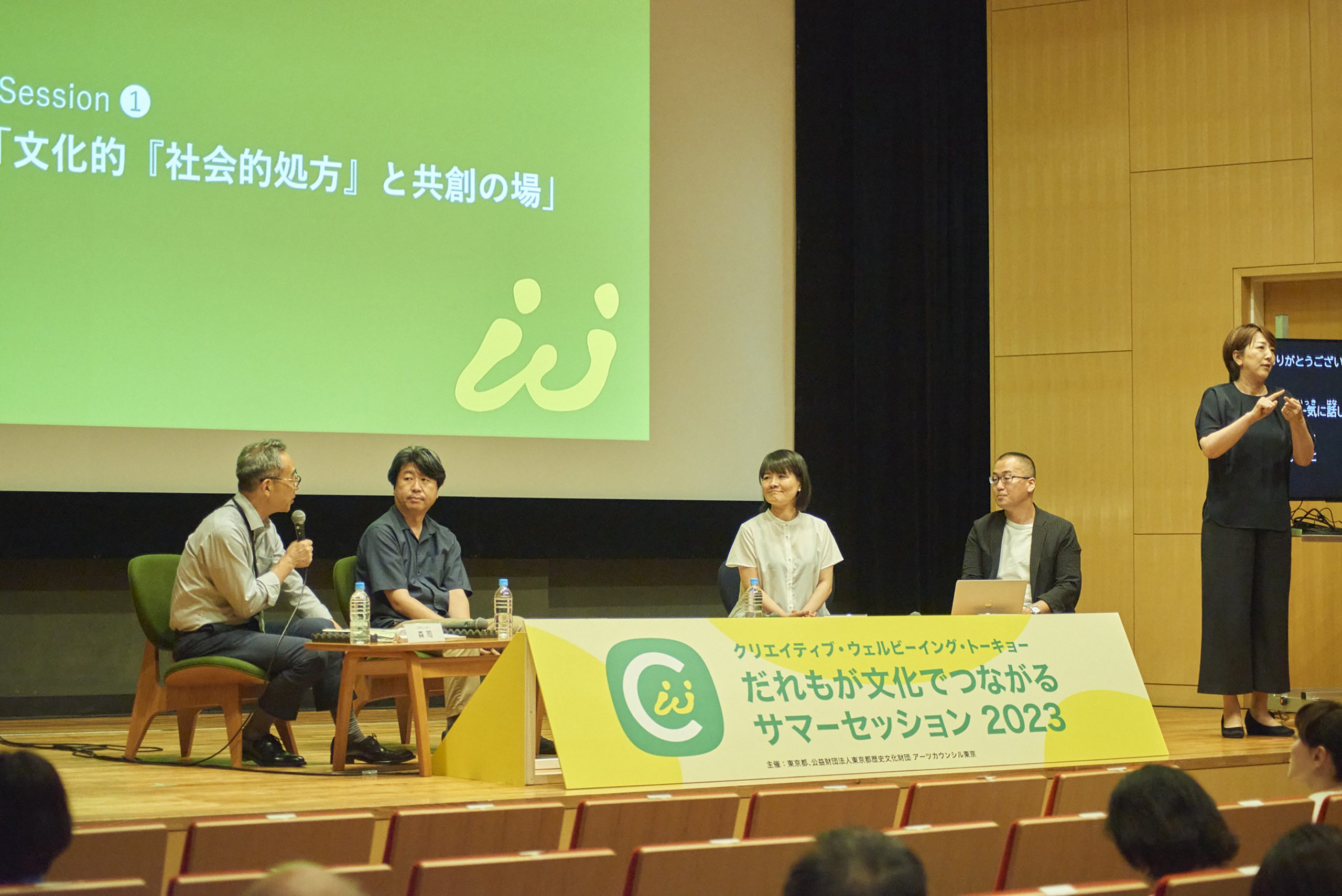
A “cultural prescription” to connect with the arts and community as an alternative to a medical prescription
Tatsuya Ito(Specially Appointed Professor and Vice Director, Public Collaboration Center, Tokyo University of the Arts. Project Leader, Art-based Communication Platform for Co-creation to Build a Convivial Society.)
Sawako Inaniwa(Senior Researcher, National Center for Art Research, Independent Administrative Institution National Museum of Art)
Atsushi Nakano(Director’s Office, Business Division, Kanagawa Kenmin Hall)
Moderator:Tsukasa Mori(Head of Project Coordination Division, Arts Council Tokyo)
Session 1 was led by Tatsuya Ito and Sawako Inaniwa, who have been conducting “social design projects to foster community through art” for over a decade since 2011, including the Tobira Project, a collaboration between Tokyo Metropolitan Art Museum, Tokyo University of the Arts, and the general public. They explained the concept of “cultural prescribing” that is already being practiced in the UK, in which the healthcare system cooperates with art and cultural offerings to prescribe art. They covered what kinds of cultural development and co-creation platforms are possible in Japan and introduced concepts and projects initiated in Japan at the national and university levels.
Instead of being prescribed medication, patients in the UK who experience unwanted loneliness and isolation, or other social circumstances that are contributing factors to their illness, are referred to community resources that allow them to develop relationships with others. This approach is called “social prescribing” and has been incorporated into the healthcare system. A “link worker,” a non-medical professional whose role is to link patients to medical professionals, listens carefully to what the patients have to say, connects them to appropriate group activities, museum programs, and other community groups and services, and serves as a bridge that helps them engage with others and connect with their local community. Drawing on this practice in the UK, an initiative named “cultural prescribing” that prevents unwanted loneliness and isolation through the arts and culture is about to be launched in Japan.
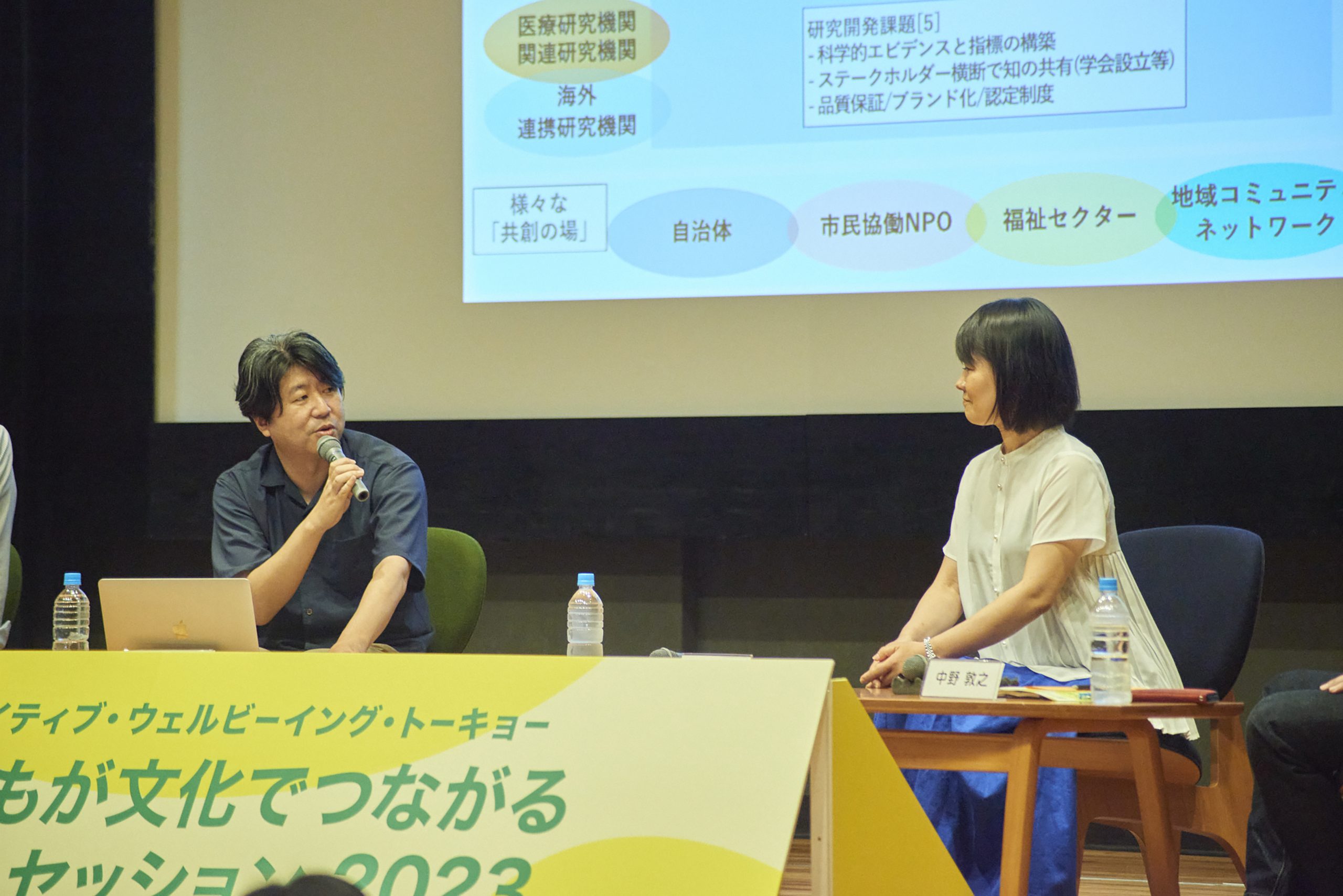
First, Tatsuya Ito from the Tokyo University of the Arts introduced the Art-based Communication Platform for Co-creation to Build a Convivial Society, which the university launched in April 2023. This project, adopted by the Japan Science and Technology Agency (JST) as part of its Program on Open Innovation Platforms for Industry-academia Co-creation (COI-NEXT), addresses the issue of unwanted loneliness and isolation in a hyper-aged society. Art acts as the glue connecting people to creative experiences and resilient community initiatives in cooperation with 39 sites, including medical institutions, welfare agencies, the technology sector, community networks, local governments, overseas research institutions, and NPOs. The project will create a system to jointly consider the design of personalized care and social participation plans. Ito shared his vision: “With an eye on the next SDGs after 2030, I would like to consider whether services and technologies developed in the future will truly enrich people’s lives, including their hearts and minds.”
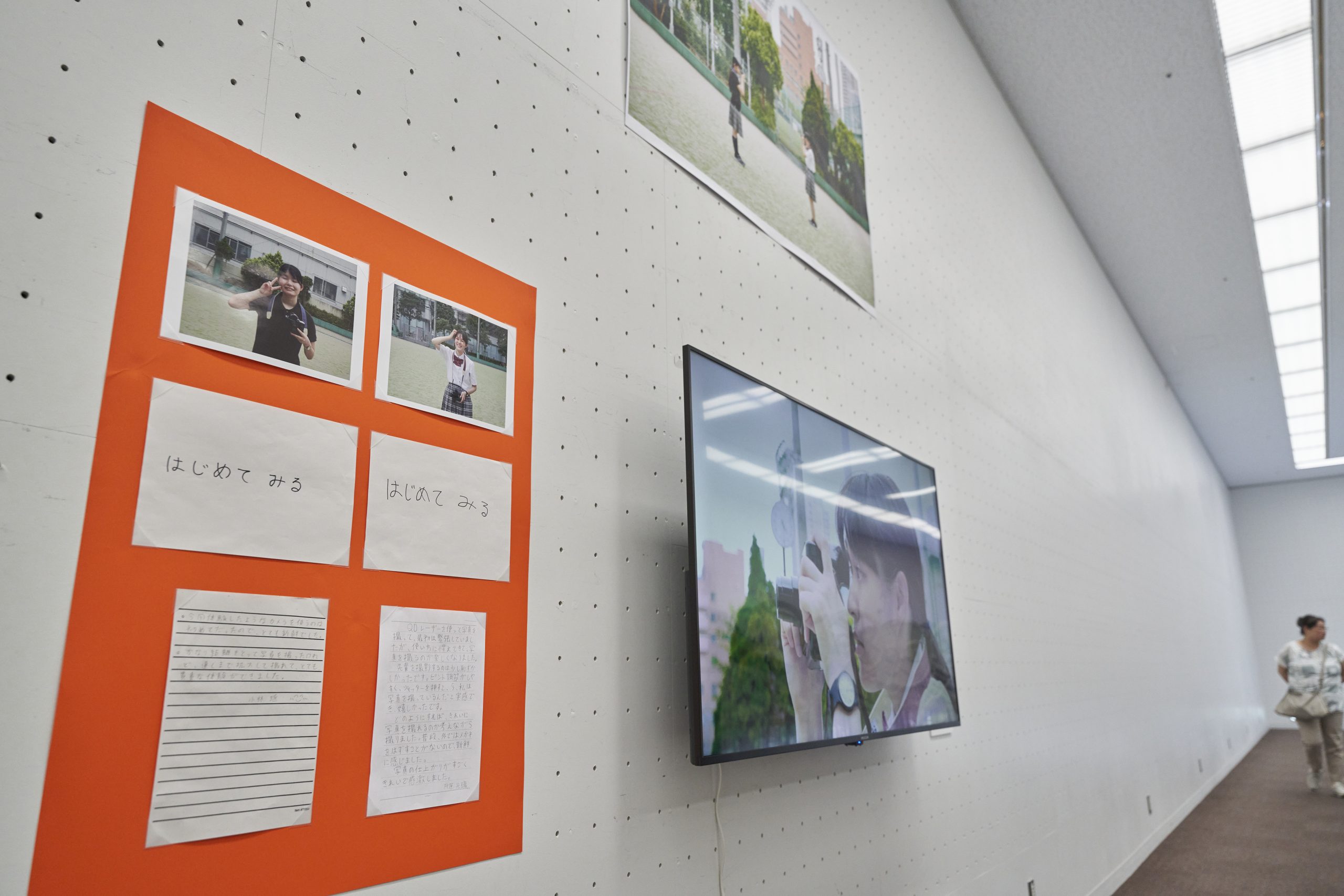
Next, Sawako Inaniwa introduced the Creative Health report, a study by an all-party parliamentary group in the UK on how the arts can have a positive impact on people’s health and well-being. Inaniwa serves as Senior Researcher at the National Center for Art Research, a new department which was established within the headquarters of the National Museum of Art at the end of March 2023. The center has also begun a project called “Health and Wellbeing.” Based on research conducted in the UK in January, Inaniwa cited as an example the practices at Platt Hall, part of Manchester Art Gallery, which is facing social issues such as poverty and aging.
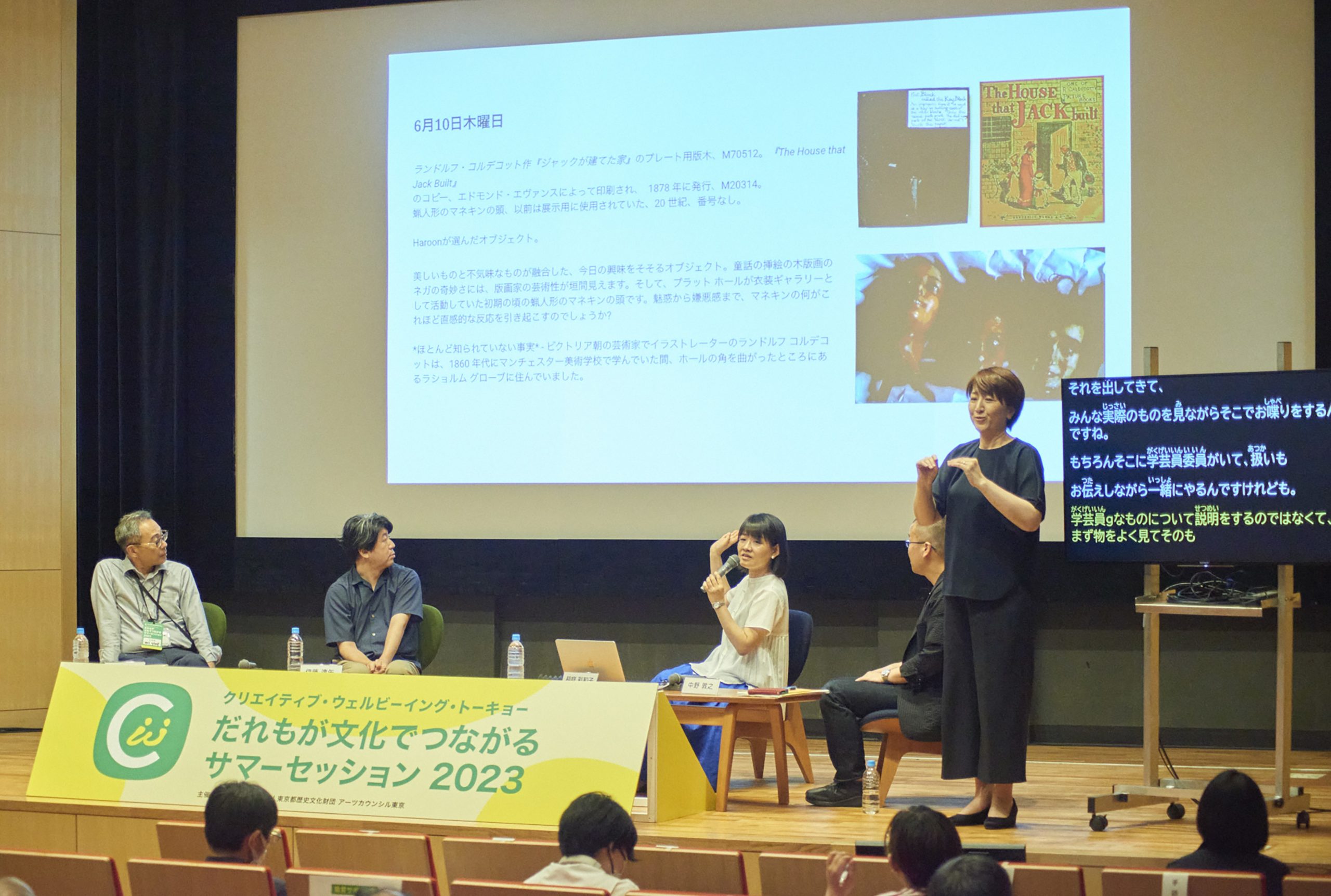
 The “Creative Health” report published by an all-party parliamentary group in the UK in 2017.
The “Creative Health” report published by an all-party parliamentary group in the UK in 2017.
(The Japanese version was published in October by the National Center for Art Research. The report is free to view.)
Figures based on a variety of evidence show how art can have a positive impact on people’s health and well-being.
“As participants looked at the collection (of artworks) and chatted with others who had gathered online, they shared various memories with each other. The workshop had the effect of creating a state of well-being, which the UK representative referred to as ‘belonging.’ Well-being, the representative said, is about having ‘a sense of connectedness.’ For example, it is difficult for people to connect with each other when they try to tackle it head-on, but through artwork, they become able to better express their inner selves and understand each other’s cultural background. That’s where the potential for organic connections lies,” she said.
Finally, Atsushi Nakano from the Kanagawa Kenmin Hall took the mic. Nakano excels at staging performances and events in various types of spaces due to his experience in tent theater (experimental productions in unconventional venues, such as tents), which he began under the guidance of his university professor Juro Kara. He shared his experience at the Albany, an arts center in Deptford, southeast London, where he spent 11 months in 2022 on a training program organized by Japan’s Agency for Cultural Affairs.
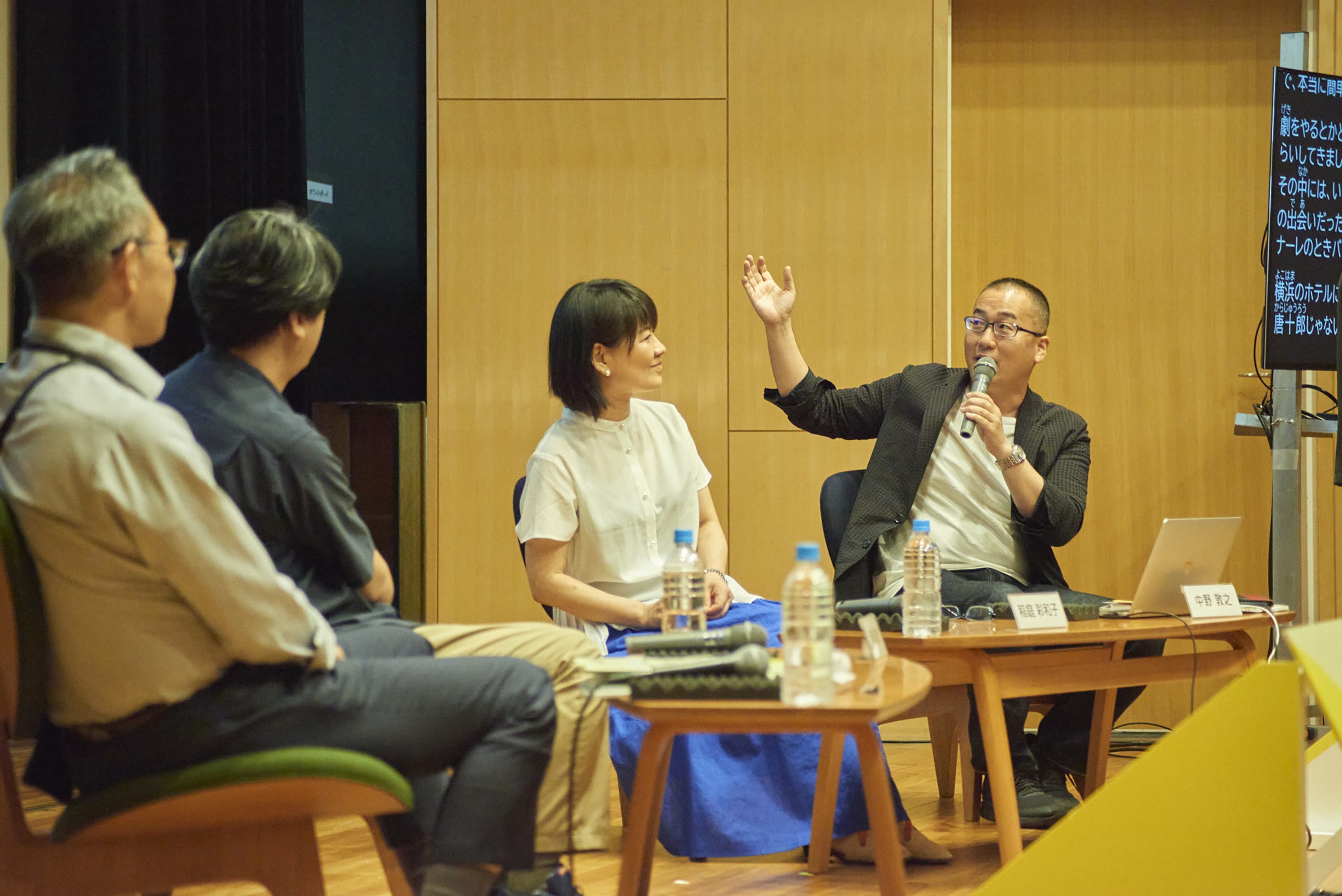
The Albany is a small, 150-seat theater in a dynamic neighborhood of London. The same building houses theater and dance companies, a library, community space, childcare center, radio station, and so on. Nakano introduced the wide variety of activities that took place there, including workshops for seniors on topics as varied as handicrafts, choral singing, and djembe; mobile theater with stories constructed from real-life experiences; and poetry on environmental issues. “Everyone loved to sing and dance, and even people with learning disabilities loved the club events.” The Albany also offered a massage service for parents and guardians, and provided free croissants and tea or coffee at the Monday morning symposium. “People such as a mother dropping her child off at daycare and a grandmother who immigrated from Jamaica at the age of 40 were all eager participants in the theater’s activities. I realized that it truly was a theater for the people of the city,” he said.
 Nakano introduced examples of events held at the Albany, which has become a gathering place for all kinds of people living in the neighborhood. He spoke passionately about his desire to apply the experience he gained at the Albany to the Kanagawa Kenmin Hall, which will be closed for an extended period of time in the future.
Nakano introduced examples of events held at the Albany, which has become a gathering place for all kinds of people living in the neighborhood. He spoke passionately about his desire to apply the experience he gained at the Albany to the Kanagawa Kenmin Hall, which will be closed for an extended period of time in the future.
(Left) Mobile theater performance at a commercial facility, with stories based on life experiences
(Right) Climate change-themed fashion show
The Kanagawa Kenmin Hall is scheduled to be closed from 2025 due to the aging of the building. Expressing his commitment to rebuilding the theater, Nakano said, “Rather than complacently thinking that we can solve social issues the way things are, I would like to work even harder so that the arts and culture and cultural facilities become directly connected to the realities of society and peoples’ daily lives, or even to their soul, and take root there. I want it to be a public hall that is truly needed in the community.”
Enjoying the “gap” and creating something together is a form of care
Yoshinari Nishio(Associate Professor, Tokyo University of the Arts)
Asa Ito(Professor, Tokyo Institute of Technology)
Moderator: Tsukasa Mori(Head of Project Coordination Division, Arts Council Tokyo)
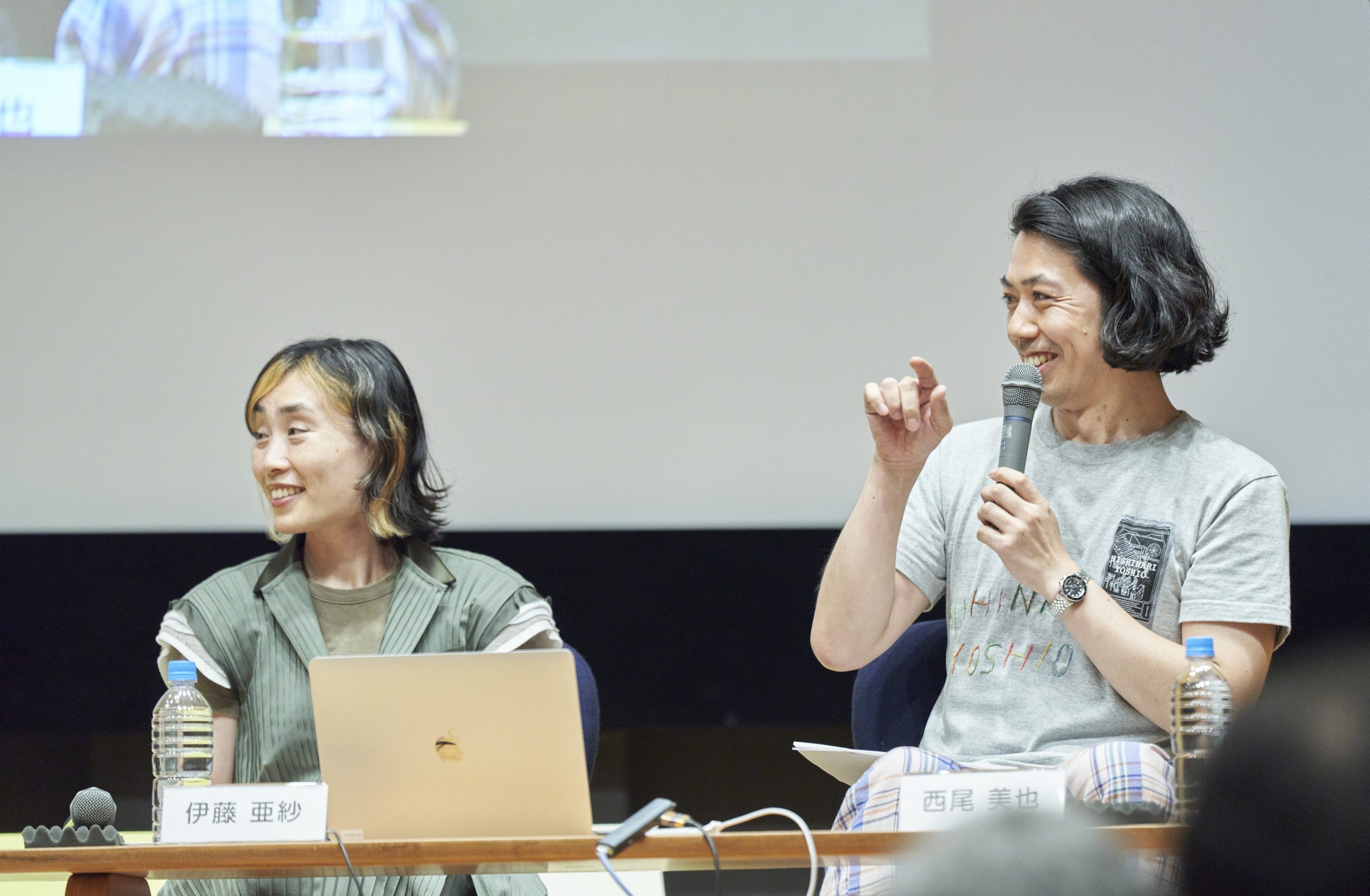
Session 8 began with a report by artist Yoshinari Nishio on his project on “fashion and communication.” At the request of the Breaker Project, a cultural project based in Nishinari-ku, Osaka City, Nishio has been working with local senior citizens since 2016. In 2018, he initiated a fashion brand called NISHINARI YOSHIO.
“Twice a week, I got together with a group of ladies who are good at knitting and handicrafts in an empty store that used to sell furniture. We took apart old clothes and exchanged pieces with others, or recreated clothes people used to wear based on photos. It was a blessing to be able to work on projects with the same members in the same place every week on an ongoing basis, and we learned a lot from each other in that time.”

Their first task when launching and commercializing the brand in 2018 was to “think of someone close to us and create clothing for that person.” From there, the women created items such as “asymmetrical pants” with an 80-centimeter-long zipper for a person with a disability on one leg, and a “yakitori jacket” to protect the arms of a chicken butcher shop owner from burns. “We have had men from Nishinari and immigrants from overseas model our products for product photos, which has created connections in the community, and we have had our products sold at a department store in Umeda. The project has sparked various kinds of communication,” Nishio said.
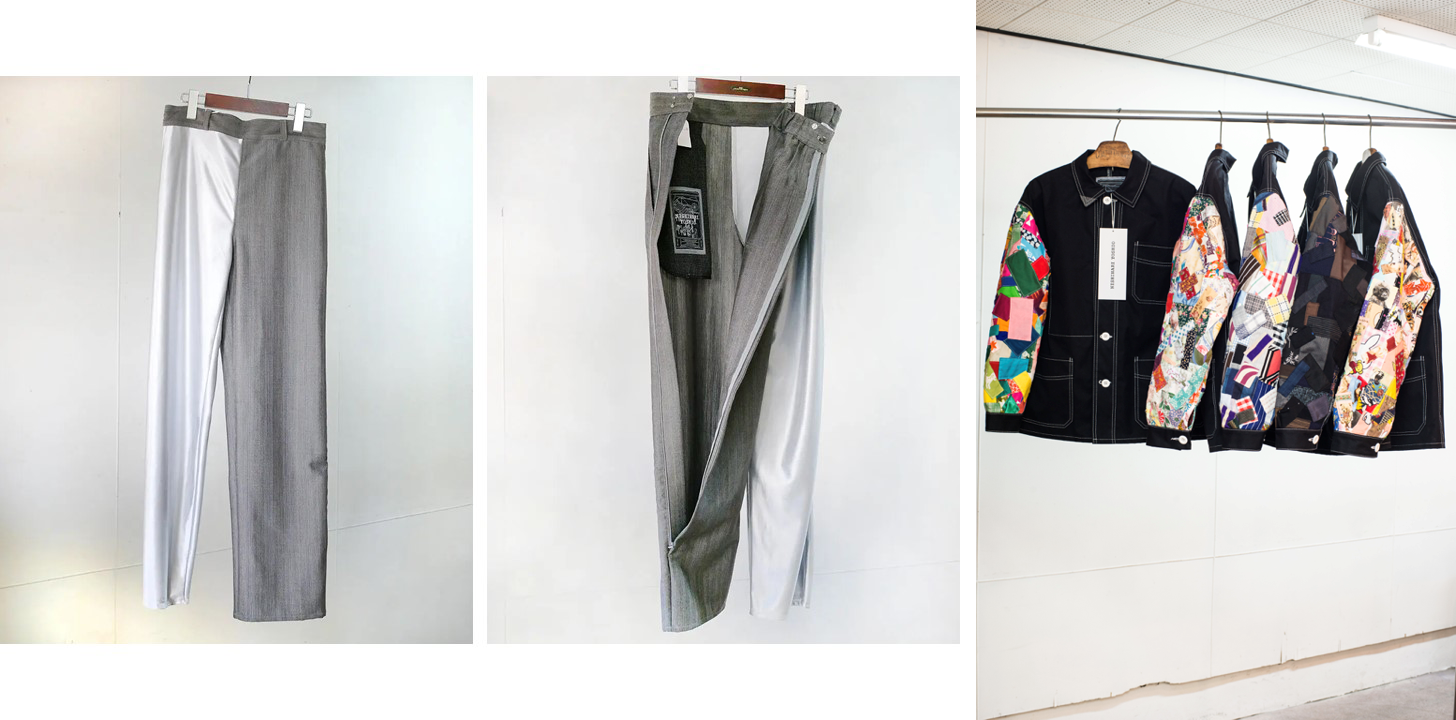
Currently, each member has been asked to think of her “last three pieces of clothing.” The exhibition room recreated the atmosphere of the Nishinari furniture store and displayed the first piece of clothing completed by each participant. They are in the process of discussing what to make for their second and third pieces.

Next, Professor Asa Ito from the Tokyo Institute of Technology introduced three specific examples of co-creation and collaborative research. “I study people with disabilities and illnesses by talking directly with them to understand the unique perspectives on society their disabilities bring and what kinds of physical workarounds they use to get by. I see it as less of a dialogue between researcher and research subject and more of a co-creation situation,” Ito explained.
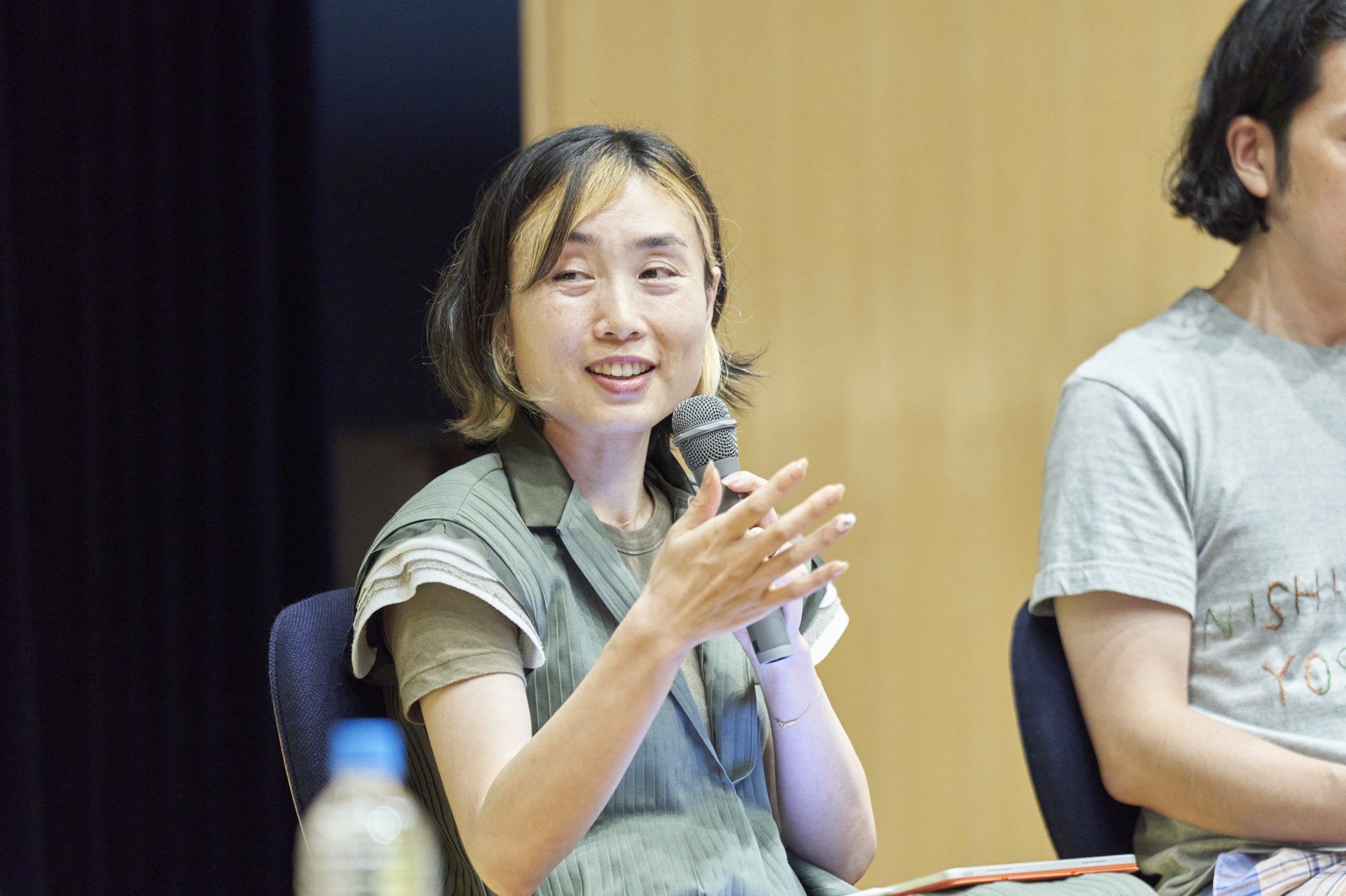
One of her most memorable examples was the Mienai Sports Zukan (“Illustrated guide to sports without sight”) about enjoying sports with people with visual impairments. Ito asked athletes and instructors in 12 sports about the virtual sensations they experience while playing those sports, and then translated those sensations together using everyday items. In fencing, for example, fencers move their wrists flexibly to keep up with their opponent’s movements, then quickly move in and strike. That experience of the split-second change between defense and attack was translated into a competition involving alphabet blocks instead of swords, with one side trying to prevent their block from being dislodged and the other side trying to dislodge it.
“When blind people are unable to watch sports, there are two ways to approach this situation. One is the idea of what might be called ‘accessibility,’ in which we convey information in some form about what is happening in the game. But we came up with the idea of creating situations that enable those unable to participate to participate. Borrowing their perspectives also allows us to notice aspects about the sport that we had not noticed before. When each sport is translated and experienced in this way, sighted people perceive the sport with greater clarity when they actually watch the game.”
 (Left) In the Mienai Sports Zukan, fencing was “translated” into a competition in which swords are replaced by alphabet blocks. By experiencing a match in this way, “people who are just starting out with the sport are able to quickly grasp key aspects of how it is played,” says Ito.
(Left) In the Mienai Sports Zukan, fencing was “translated” into a competition in which swords are replaced by alphabet blocks. By experiencing a match in this way, “people who are just starting out with the sport are able to quickly grasp key aspects of how it is played,” says Ito.
(Right) Ito also introduced “Designing a Country without Sight,” a workshop that considered what a country would be like if it was composed only of the congenitally blind, and “Dancing with an avatar robot,” a project involving OriHime, a remote-controlled avatar robot.
The session concluded with a comment from a woman participating in Nishio’s project that made everyone in the session smile and relax: “I was told that I should mentally prepare myself because Nishio would give us a lot of difficult tasks,” the woman said. (Laughter.) “I could sew with a sewing machine, but I didn’t know how to embroider. But the veteran ladies there taught me embroidery. Everyone who comes to Tansu is kind and generous.”
Ito, who was listening to the exchange between Nishio and the women, said, “It’s important to be unreasonable.” (Laughter.) Turning to Nishio, Ito asked, “You ask them to overcome such high hurdles because you believe in their potential, right?” Nishio responded, “I do not use the term co-creation, but rather say that we will become free together. I think it’s through each other’s skills, common sense, and unreasonable demands that we try to accomplish things together that neither of us has done before.” Mori also described the project as “a charming initiative to enjoy the ‘gaps’ in each other’s abilities.”
While discussing the concept of “co-creation,” Ito said, “If there is someone who can take you on a fresh adventure, that person is your co-creation partner,” and, “It’s interesting how there are always situations in which the initial question changes as other questions are tacked on or layered on top of the initial question. I think the greatest form of care, or recovery, in Nishio’s project lies in how the question changes.” Mori added, “When we say ‘everyone,’ it’s important to strike a balance between ensuring that the project is broadly applicable to everyone while having interesting parts that pose a challenge for some. Nishio’s project contains both vectors.”
Overall, it seemed that the concept of doing something together may be more important than the idea that culture and the arts are socially useful. The session also provided insights into accessibility ahead of the 2025 Deaflympics.
Reporting and text: Yuri Shirasaka
Photos courtesy of the Arts Council Tokyo
Translation: Jena Hayama
■Creative Well-being Tokyo Summer Session 2023
Event website https://creativewell-session.jp/
*Reports on each talk session, lecture, and workshop are available below.
https://creativewell.rekibun.or.jp/activity/detail/summersession2023/
Session 1 Opening/Greetings by the organizers/Cultural “social prescribing” and platforms for co-creation
Date/time: Saturady, July 29, 2023 13:15 -15:00
Speaker: Sawako Inaniwa (Senior Researcher, National Center for Art Research), Atsushi Nakano (Director’s Office, Business Division, Kanagawa Kenmin Hall), Tatsuya Ito (Specially Appointed Professor, Tokyo University of the Arts)
Moderator: Tsukasa Mori (Head of Project Coordination Division, Arts Council Tokyo)
Session 2 Expression by deaf people
Date/time: Saturady, July 29, 2023 15:30 – 17:00
Speaker: Kazunori Nemoto (metote-lab), Yuya Nishi (Deaf Art researcher)
Moderator: Natsumi Kanno (Re;Signing Project representative)
Movie screening “Le mani toccano il mondo” (“Hands Touch the World”)
Date/time: Sunday, July 30, 2023 10:00 -11:00
*60 minutes/Free
Session 3 A world encountered through touch
Date/time: Sunday, July 30, 2023 11:15 – 12:45
Speaker: Koko Okano (Director of the movie “Le mani toccano il mondo,” Vice Director of Vangi Sculpture Garden Museum), Kozue Handa (Part-time Lecturer, Meiji Gakuin University)
Moderator: Kazuji Mogi (Professor, Atomi University)
Session 4 Visitor-friendly art museums
Date/time: Sunday, July 30, 2023 13:30 – 15:00
Speaker: Toshio Takeuchi (Curator, Tokushima Modern Art Museum), Sachiko Kamei (Chief Staff, Tokushima Modern Art Museum), Junko Moriyama (Educational Program Coordinator, Art Tower Mito Contemporary Art Gallery)
Moderator: Kaoru Ouchi (Head of Cultural Coexistence Section, Tokyo Shibuya Koen-dori Gallery)
Session 5 Interactive co-creation experiences at theaters/concert halls
Date/time: Sunday, July 30, 2023 15:30 – 17:00
Speaker: Ryohei Kondo (Artistic Director, Saitama Arts Theater), Naoko Kaji (Head of Planning Division, Tokyo Bunka Kaikan)
Moderator: Mia Nakamura (Professor, Graduate School of Design, Kyushu University)
Session 6 Towards the Deaflympics
Date/time: Monday, July 31, 2023 10:00 – 11:30
Speaker: Yutaka Osugi (Professor, Tsukuba University of Technology), Genichi Shimizu (Director, Kita Noh Theatre)
Moderator: Satoshi Ezoe (actor)
Session 7 Information accessibility and technology
Date/time: Monday, July 31, 2023 12:30~14:00
Speaker: Natsumi Nakano (Science Communicator, National Museum of Emerging Science and Innovation (Miraikan)) , Akihisa Shitara (Graduate School of Library, Information and Media Studies, University of Tsukuba)
Moderator: Kazunao Abe (Professor, Tokyo Polytechnic University)
Session 8 Looking at co-creation through cultural practices
Date/time: Monday, July 31, 2023 14:30~16:00
Speaker: Yoshinari Nishio (Associate Professor, Tokyo University of the Arts), Asa Ito (Professor, Tokyo Institute of Technology)
Moderator: Tsukasa Mori (Head of Project Coordination Division, Arts Council Tokyo)


